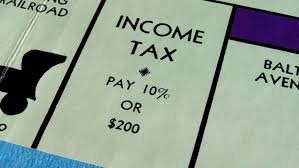Where's My Tax Refund?
Written By: Reginald Watson, Regulatory Compliance Counsel, NAFCU

Tax season is in full swing, and while credit unions are gearing up to process tax return payments, the NAFCU Compliance team has received a number of questions on what to do when the name on a tax return ACH entry doesn’t exactly match the name on the account.
The National Automated Clearing House Association (NACHA) provides Operating Rules for ACH transfers, but unfortunately does not provide much guidance in the area of federal ACH transfers. While the general rule under the NACHA framework is that a receiving depository financial institutions (RDFI) has no basis to dispute the validity of an ACH Entry in the absence of a customer complaint (see, ACH Bulletin #1-2014), credit unions often make the business decision to reject and return an ACH entry when there is a mismatch in light of the omnipresent risk of fraud and identity theft.
A helpful “get out of jail free” resource for credit unions known as the Green Book provides guidelines for addressing federal ACH payments in these situations. Not to be confused with the Oscar winning film, the Treasury’s guide provides instructions for completing returns, noting that NACHA’s mandatory return rules and return reason codes still apply to federal ACH transfers. While I won’t get too into the weeds on all that it covers, I did want to mention the Treasury’s prohibition on placing a hold on federal ACH funds. Here is a brief excerpt from chapter 4 of the guide:
Holding Payments in Suspense Accounts
Under no circumstances should a financial institution hold payments indefinitely in a suspense account, or by any other means, nor should payments otherwise be held if any of the conditions apply on when to return a payment. Holding payments may constitute a breach of the financial institution’s warranty for the handling of Federal government ACH payments under regulations codified in 31 CFR Part 210.
Green Book, at 4-4.
Another thing of note when it comes to misdirected payments, which occur when the account to which the ACH credit is directed is not actually owned by the person listed in the ACH entry, the credit union is required to notify the IRS. See, 31 C.F.R. § 210.8(d). This notification requirement may be satisfied by rejecting and returning the ACH entry with the appropriate reason code. The Green Book further indicates that if there is an error in the tax refund recipient’s account number on the ACH entry, but the credit union is able to identify the error as well as the true account number, the credit union is permitted to originate a Notification of Change entry to post the payment to the correct account number “as long as there is no change in the title of the account or in the interest of the recipient or beneficiary.” This Notification of Change entry will also satisfy the requirement to notify the IRS of the misdirected payment under section 210.8(d).
Lastly, the Green book includes similar guidance to the NACHA general rule expressed earlier that absent a member’s complaint, credit unions are not required to manually verify ACH entries. See, Green Book, at 2-6. That being said, we often find that credit unions are cautious in preventing fraud for their members’ accounts.
